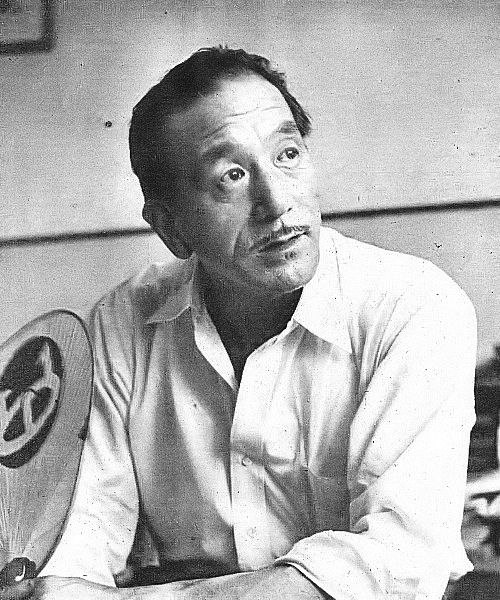Facts for Kids
Yasujiro Ozu was a celebrated Japanese film director, known for his contemplative storytelling and innovative cinematography that highlighted the subtleties of everyday life.
Overview
Biography
Filmography
Directorial Style
Influence On Cinema
Cinematic Techniques
Themes In Ozu's Films
Awards And Recognition
Legacy And Cultural Impact

Inside this Article
Martin Scorsese
Film Festival
Japanese
Culture
People
Spring
Light
Floor
Face
Did you know?
🎬 Yasujiro Ozu was a prominent Japanese film director known for his unique cinematic style.
🎥 He was born on December 12, 1903, in Tokyo, Japan.
📽️ Ozu is renowned for his use of low camera angles, often referred to as the 'tatami shot'.
🧘 His films frequently explore themes of family dynamics and social change.
🏆 Ozu received the Best Foreign Language Film Oscar nomination in 1955 for 'Tokyo Story'.
🗓️ He directed over 50 films between the 1920s and the 1960s.
🎭 Ozu often collaborated with screenwriter Kogo Noda to create his poignant narratives.
🇯🇵 Many of Ozu's films are characterized by their slow pacing and minimalist storytelling.
💔 His film 'Late Spring' is a touching exploration of the bond between a father and his daughter.
🎞️ Ozu passed away on December 12, 1963, on his 60th birthday, leaving a lasting legacy in world cinema.
Introduction
Biography
Ozu enjoyed quietly observing people's lives and used this in his movies. He often focused on the relationships between family members, showing how they loved and supported one another.
Filmography
1. "Tokyo Story" (1953) – This film tells the story of an elderly couple visiting their busy children in Tokyo.
2. "Late Spring" (1949) – A touching tale about a father and daughter who must learn to let go.
3. "Good Morning" (1959) – A fun movie about two boys who stop speaking to their parents!
4. "An Autumn Afternoon" (1962) – Ozu's last film, focusing on family and growing older. 🎞
️
These films help kids understand family, love, and life’s little moments!
Directorial Style
Influence On Cinema
They admired how he portrayed everyday life and emotions, showing that films don't always need big events to be meaningful. Ozu's unique techniques, quiet moments, and focus on family inspired many directors to create their own stories. His films have been studied in film schools, showing how important his work is to cinema! Ozu's art continues to spark creativity in filmmakers today!
Cinematic Techniques
Themes In Ozu's Films
Awards And Recognition
His film "Tokyo Story" is often listed among the best movies ever made. In 1963, the Venice Film Festival honored Ozu with a special award for his contributions to cinema. Many accolades have been given to his films and his legacy since he passed away. Worldwide, festivals and museums display Ozu’s work, reminding everyone of his amazing storytelling skills and creativity. Ozu’s films continue to be recognized and loved by fans.
Legacy And Cultural Impact
Whether you're watching one of his classics or learning about him in school, Ozu's storytelling reminds us of the beauty in everyday life!

